I would definitely suggest using element.getBoundingClientRect().
https://developer.mozilla.org/en-US/docs/Web/API/element.getBoundingClientRect
Summary
Returns a text rectangle object that encloses a group of text
rectangles.
Syntax
var rectObject = object.getBoundingClientRect();
Returns
The returned value is a TextRectangle object which is the union of the
rectangles returned by getClientRects() for the element, i.e., the CSS
border-boxes associated with the element.
The returned value is a TextRectangle object, which contains read-only
left, top, right and bottom properties describing the border-box, in
pixels, with the top-left relative to the top-left of the viewport.
Here's a browser compatibility table taken from the linked MDN site:
+---------------+--------+-----------------+-------------------+-------+--------+
| Feature | Chrome | Firefox (Gecko) | Internet Explorer | Opera | Safari |
+---------------+--------+-----------------+-------------------+-------+--------+
| Basic support | 1.0 | 3.0 (1.9) | 4.0 | (Yes) | 4.0 |
+---------------+--------+-----------------+-------------------+-------+--------+
It's widely supported, and is really easy to use, not to mention that it's really fast. Here's a related article from John Resig: http://ejohn.org/blog/getboundingclientrect-is-awesome/
You can use it like this:
var logo = document.getElementById('hlogo');
var logoTextRectangle = logo.getBoundingClientRect();
console.log("logo's left pos.:", logoTextRectangle.left);
console.log("logo's right pos.:", logoTextRectangle.right);
Here's a really simple example: http://jsbin.com/awisom/2 (you can view and edit the code by clicking "Edit in JS Bin" in the upper right corner).
Or here's another one using Chrome's console:

Note:
I have to mention that the width and height attributes of the getBoundingClientRect() method's return value are undefined in Internet Explorer 8. It works in Chrome 26.x, Firefox 20.x and Opera 12.x though. Workaround in IE8: for width, you could subtract the return value's right and left attributes, and for height, you could subtract bottom and top attributes (like this).
